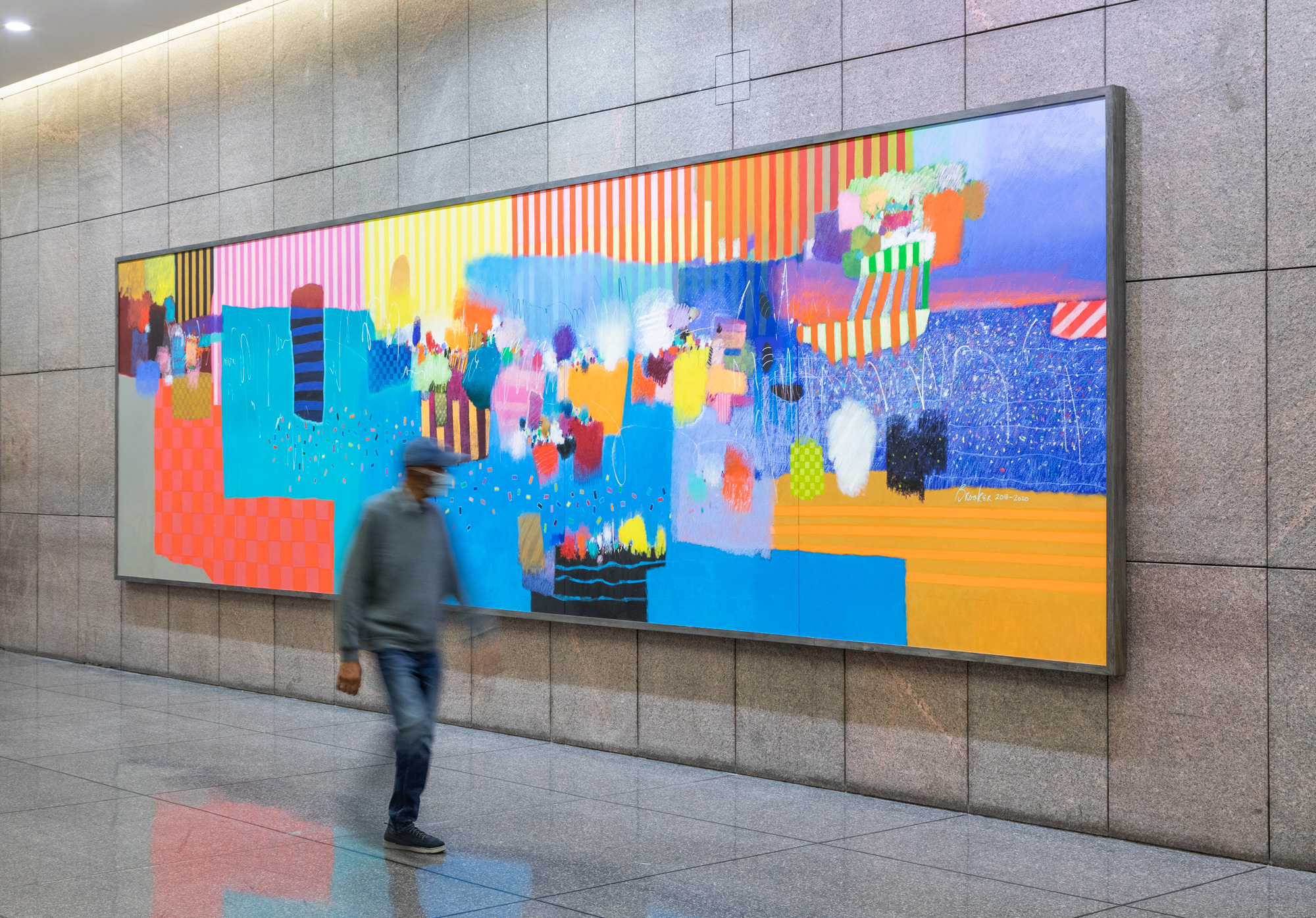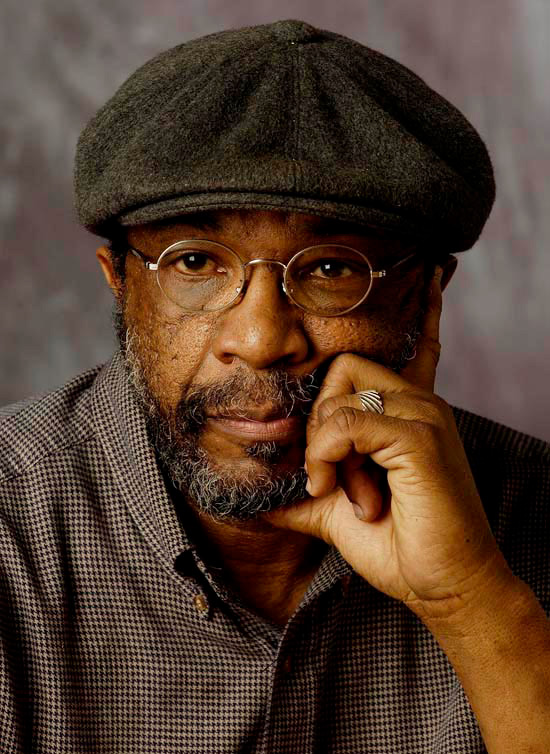Seeing the work installed, it commands the space so entirely that I can’t imagine another artwork there. I have to say that upon Moe’s passing, he left us his most generous gift. –Penny Balkin Bach, Association for Public Art’s Executive Director and Chief Curator
A 30-foot painting by the celebrated and long-time Philadelphia artist and educator, Moe Brooker (1940-2022), was commissioned through the Art in Architecture Program of the U.S. General Services Administration (GSA) and has been installed in the William J. Green Jr. Federal Building in Philadelphia at 6th and Arch Streets. The Fruit of the Spirit is a site-specific painting for the lobby and a quintessential work by Brooker, who is known for his abstract compositions of brightly-colored patches, lines, patterns, and textures. The artist’s concept for the project was “one of joy” and “an invitation that celebrates the architectural space and adds warmth to it.” Moe Brooker passed away unexpectedly in January 2022, only a few months after the artwork was installed.

The GSA’s Art in Architecture Program oversees the commissioning of visual art for federal facilities nationwide, using half of 1% of the estimated cost of construction to commission an artwork. This particular art commission was carried out for a restack and reconfiguration project at the Green Federal Building. Brooker was commissioned in 2018, and after more than two years of work, the enormous painting was installed in September 2021.
The Association for Public Art’s Executive Director and Chief Curator, Penny Balkin Bach, was on the panel that nominated Moe Brooker for this commission. To select artists for these projects, a panel that includes GSA staff, art professionals, and civic and community representatives nominates artists from a pool of diverse candidates on the GSA’s National Artist Registry (which is open to all American artists) for the GSA to evaluate. The goal of the program is to commission art that will enhance the civic meaning of federal architecture, showcase the vibrancy of American visual artists, and create a lasting cultural legacy for the people of the United States.

“Serving on the GSA panel furthers aPA’s mission of integrating public art into the public spaces of Philadelphia,” says Penny Balkin Bach, aPA’s Executive Director and Chief Curator. “Moe Brooker was the perfect artist to transform this space with his bold, beautiful, energetic, and rhythmic marks. Seeing the work installed, it commands the space so entirely that I can’t imagine another artwork there. I have to say that upon Moe’s passing, he left us his most generous gift.”
The Fruit of the Spirit (2018-2020) is now part of the GSA’s Fine Arts Collection, which is one of the oldest and largest public art collections in the country. Brooker’s painting joins Charles Searles’ Celebration (1977) in the William J. Green Jr. Federal Building. Other works in Philadelphia that are part of the program include Bicentennial Dawn (1976) by Louise Nevelson and Voyage of Ulysses (1977) by Von Schlegell, both installed at the James A. Byrne U.S. Courthouse and Order/Disorder and Ascension/Descension (1977) by Al Held inside of the Social Security Administration Mid-Atlantic Program Center.
Image at top: Photo by Joseph Hu, courtesy U.S. General Services Administration